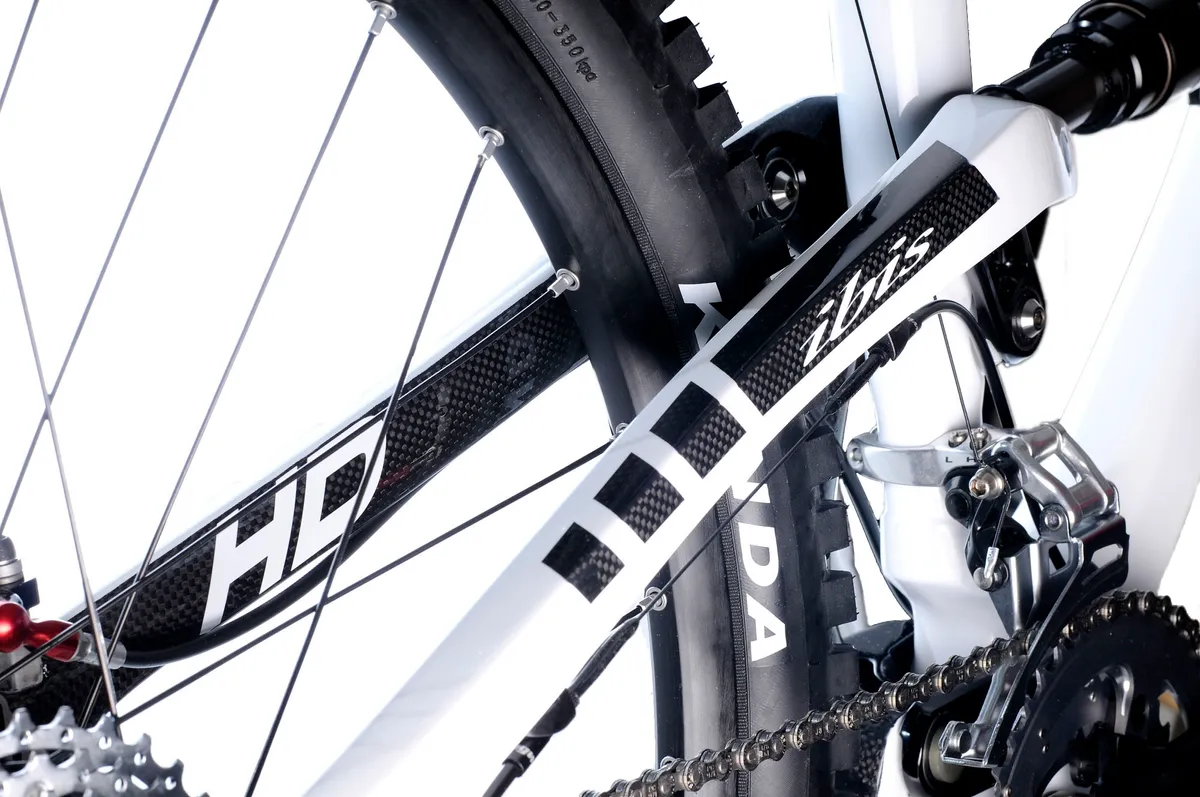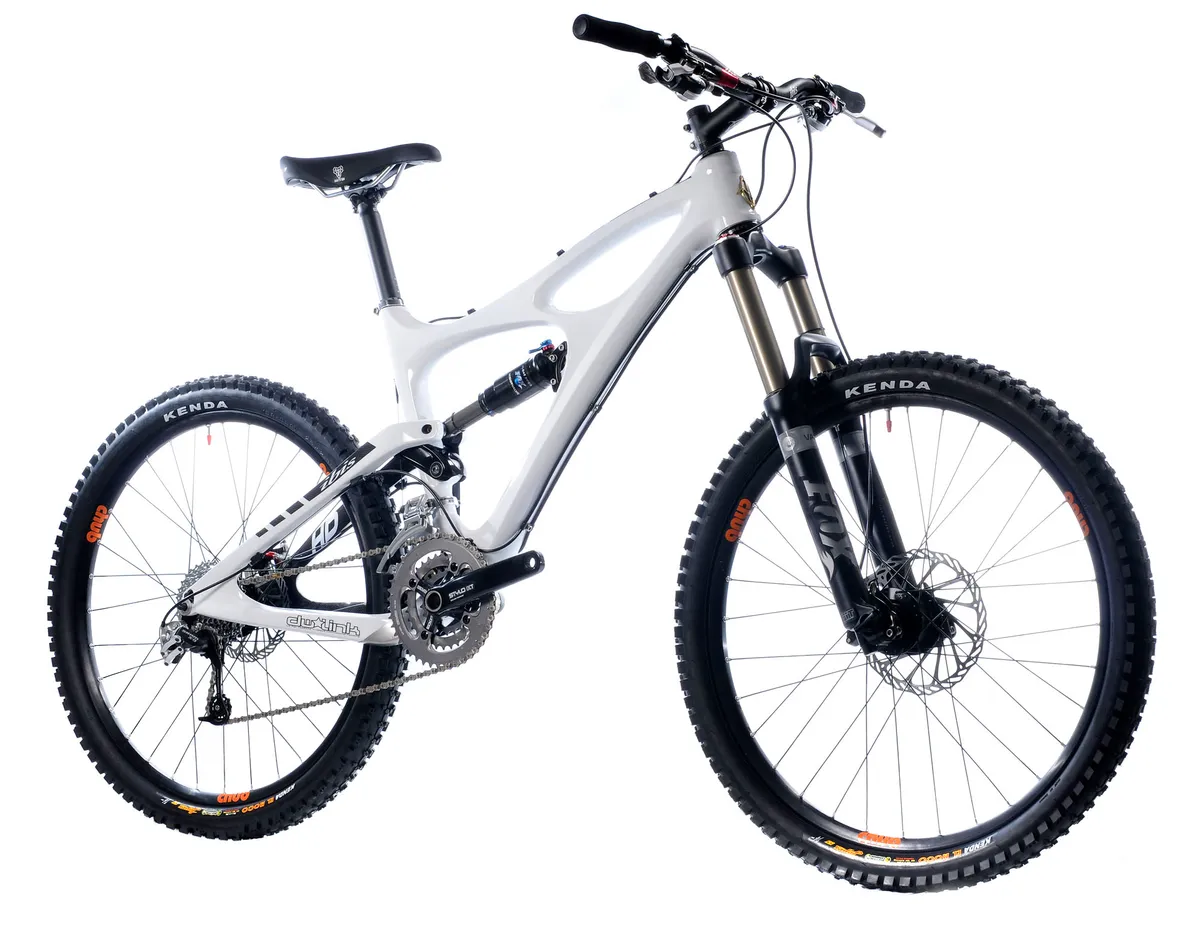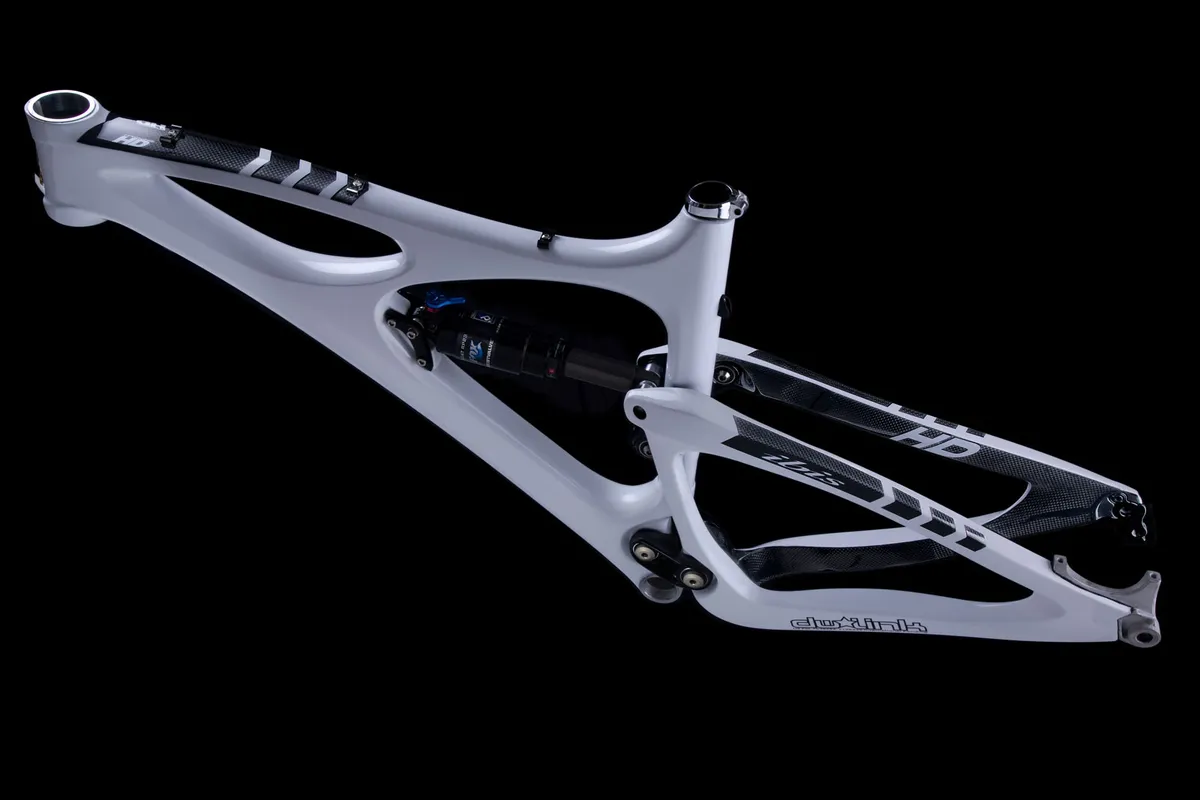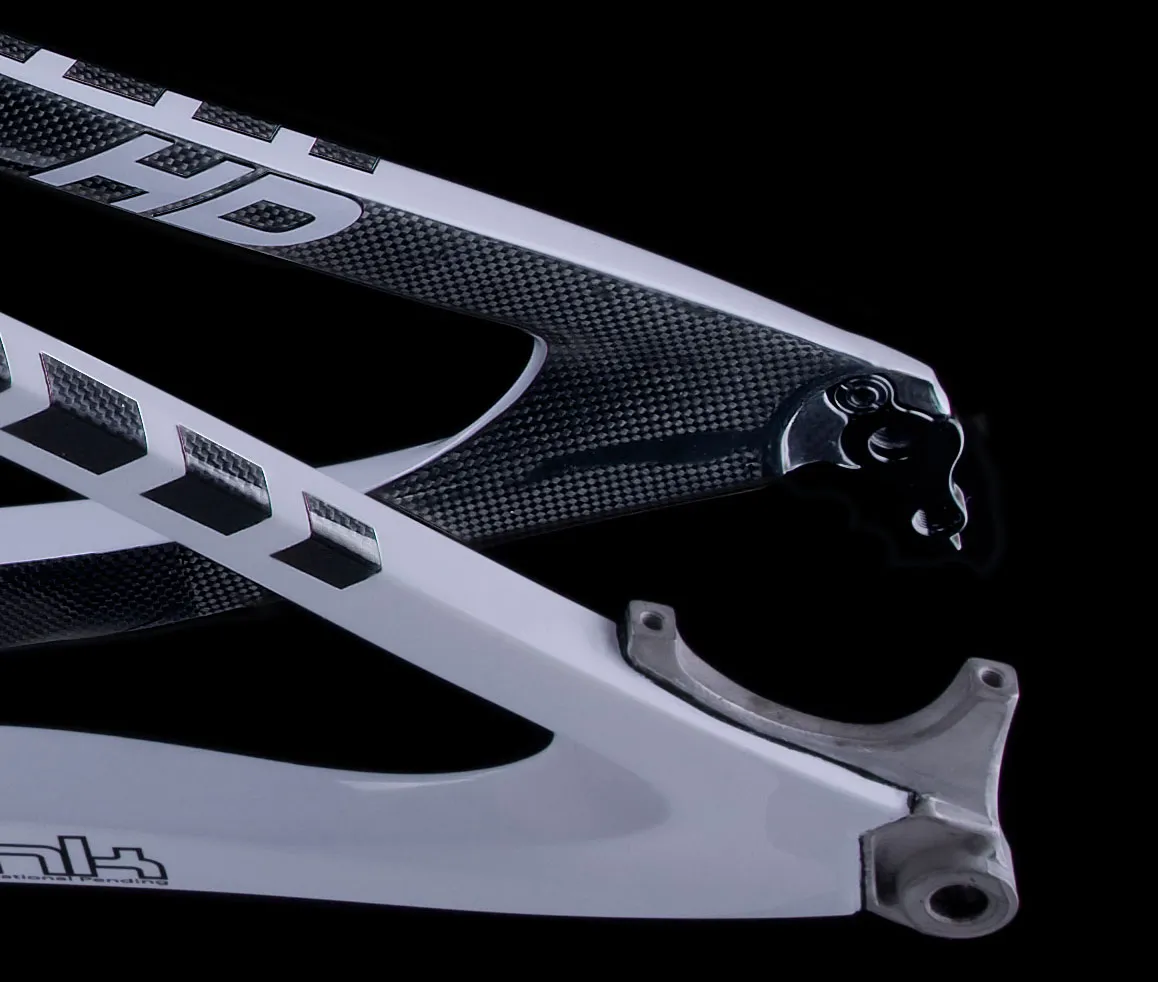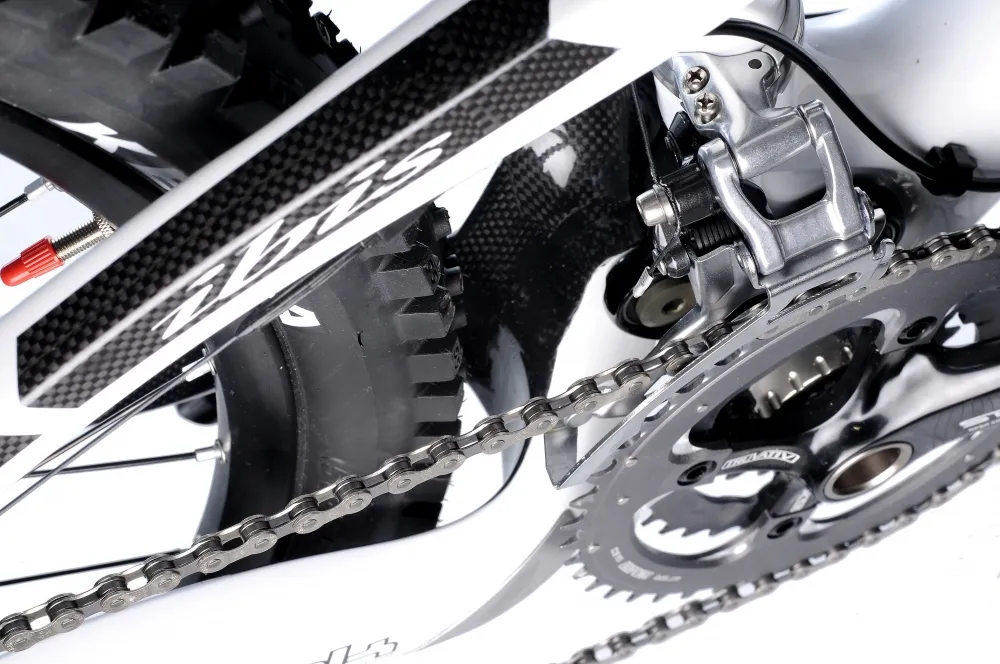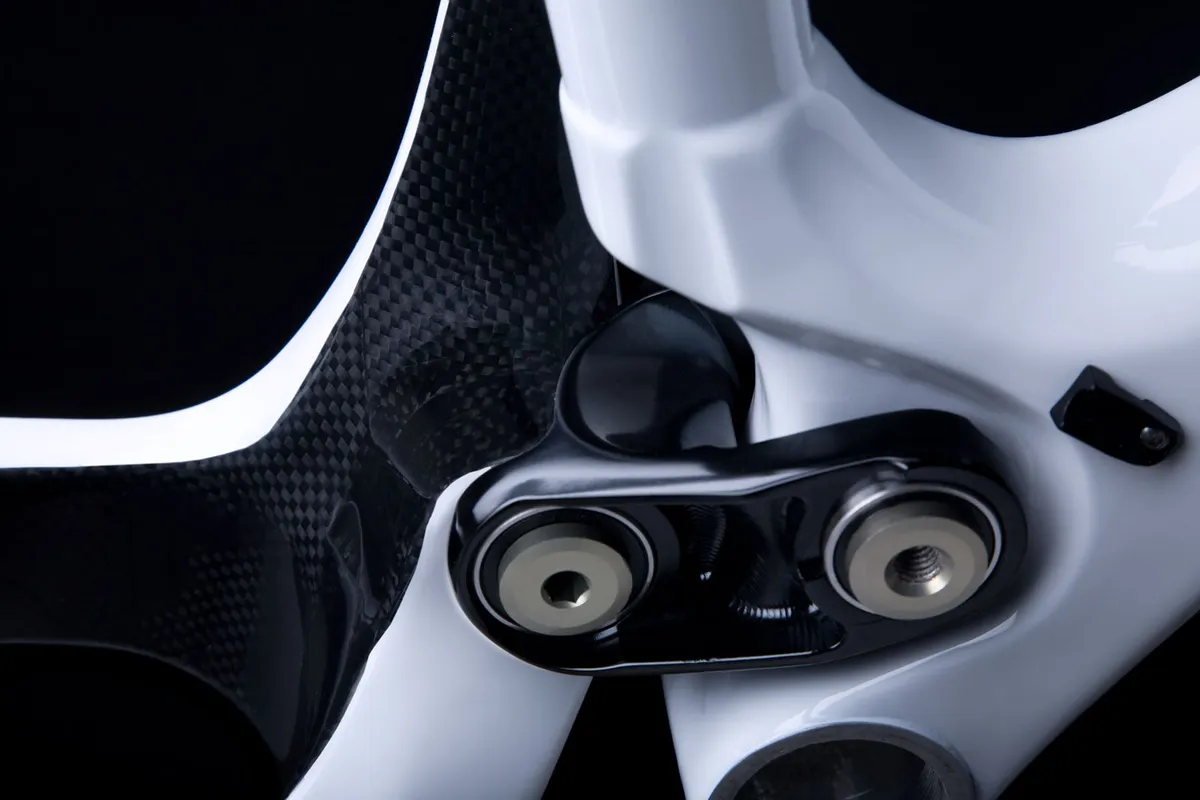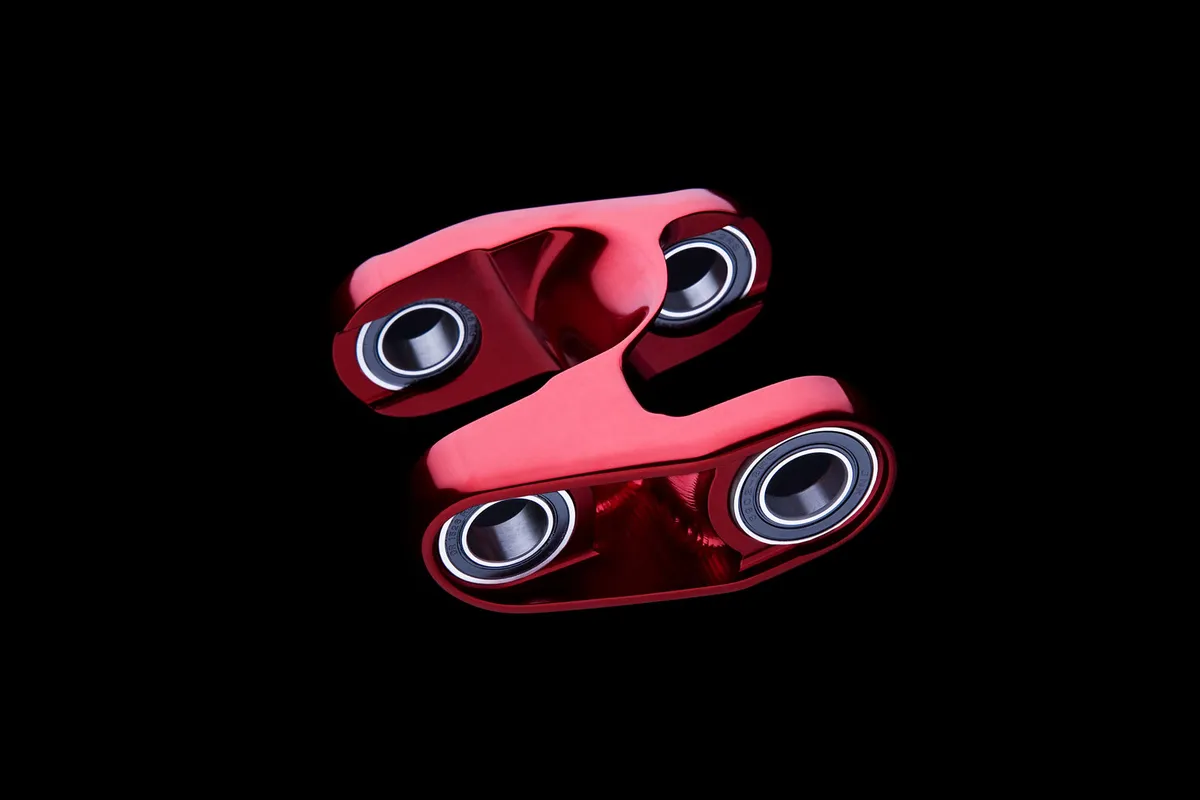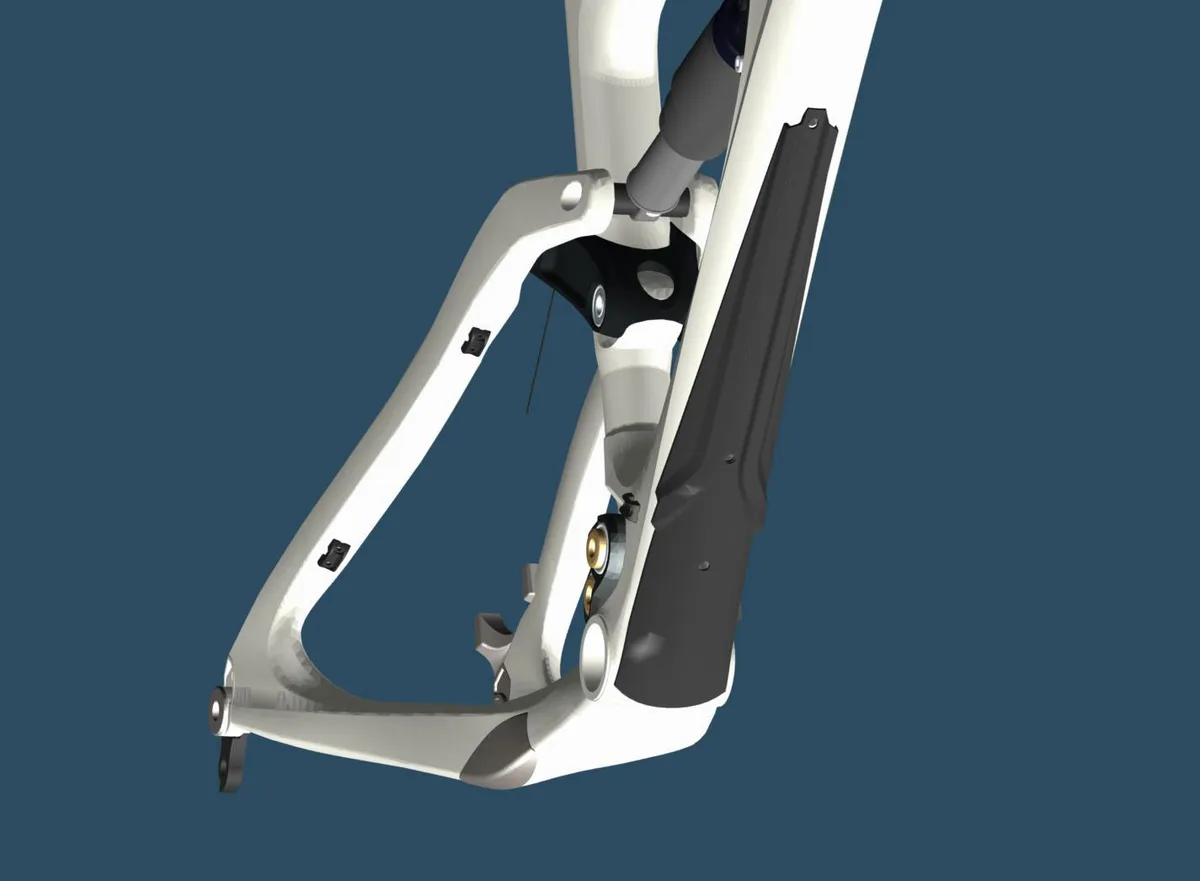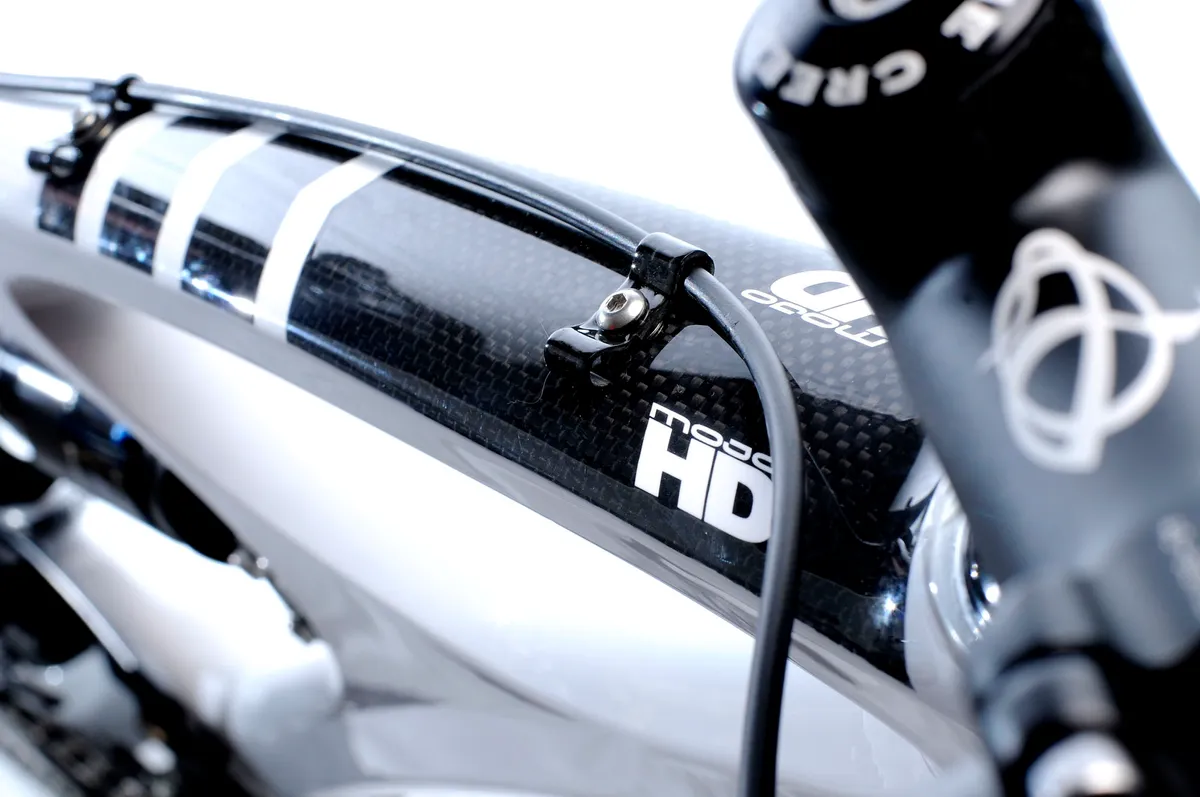Ibis Cycles finally took the wraps off their production Mojo HD this week, adding a long-awaited longer-travel and heavier-duty carbon fibre chassis to their lineup.
Rear wheel travel increases by a modest 20mm compared to the popular Mojo and Mojo SL models – from 140mm to 160mm (5.5in to 6.3in) – but Ibis say a flatter spring rate will make the HD feel longer-legged than the numbers would suggest on paper.
Concurrent changes in geometry, as well as frame and link stiffness and strength, should also make the bike more capable in demanding situations.
In keeping with the HD's more abusive target use, tubing profiles and carbon fibre layups in both the front triangle and swingarm have been modified to lend the frame more stiffness and strength than the standard Mojo.
Frame designers have also added a newly tapered 1 1/8in-to-1 1/2in head tube for extra steering precision and braking solidity while also allowing for a bigger and stouter down tube. Out back, a 12x135mm Maxle through-axle setup will reduce twist in the rear triangle under load.
Both the upper and lower links will continue to be made of forged and machined aluminium but the lower link beefs up with a combination of dual-row angular contact and large-diameter radial cartridge bearings to prevent movement between the two subassemblies.
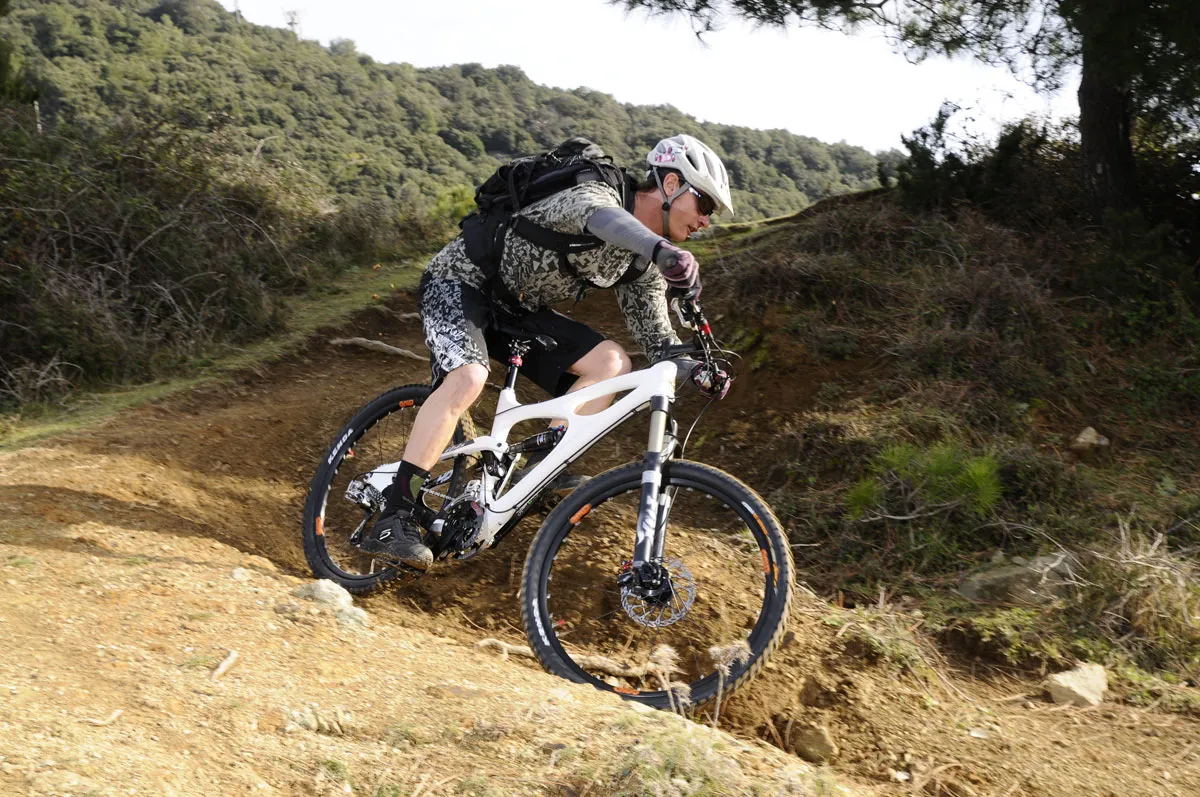
Handling has been revised to better suit the anticipated higher speeds, too. In particular, the head tube angle has slackened from 69 degrees on the standard Mojo to 67 degrees for the HD as per the requests of sponsored rider Brian Lopes, who raced a prototype frame at the UCI Downhill World Championships in Canberra, Australia last September.
Unsagged bottom bracket is raised a bit relative to the standard Mojo to accommodate the HD's additional travel but sagged height is actually 10mm lower when fitted with the recommended 160-180mm fork – meaning you might hit your pedals and cranks on obstacles from time to time but cornering should benefit from the lower centre of gravity. The top tube has also been lowered a bit for more manoeuvrability, and the chainstays and wheelbase have grown by 5mm and 35mm, respectively.
"The bike should perform well for most any of the typical riding you would do with a bike of that travel," said company principal Scot Nicol. "Fork and tyre choice are probably more influential than the frame for more extreme use, but we envision people building these up as sub-28-30lb do-anything rigs more than downhill race bikes for rough courses. Brian's a special case and Canberra was a smoother course than many downhill courses, so it depends."
Extra downhill capabilities notwithstanding, Ibis don't pigeonhole the new HD as a downhill-only machine. The additional strength and stiffness have lumped only about 220g (0.5lb) onto the standard Mojo for a total frame weight of just 2,860g (6.3lb). Ibis have retained the dw-link rear suspension design so we anticipate pedalling responsiveness to be very good.
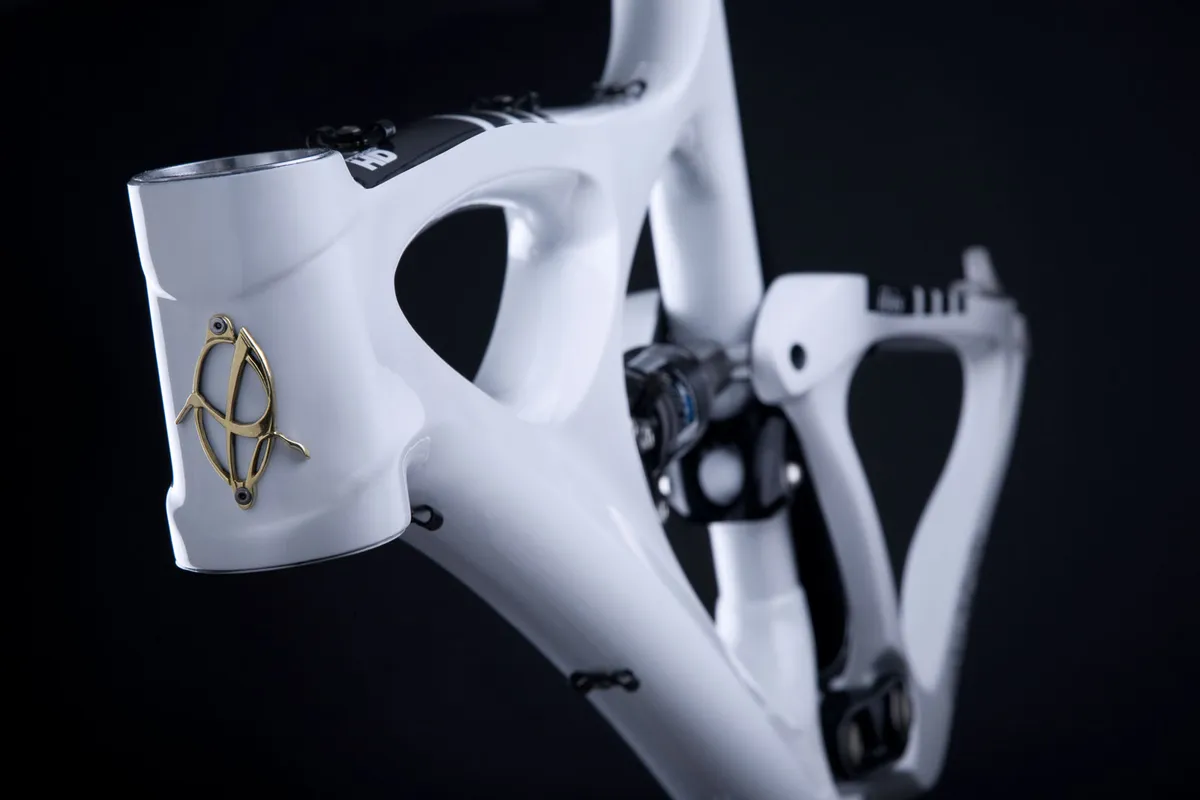
As further indication of Ibis's do-all intentions for the HD, the company will only offer the frame with a choice of two air shocks from Fox Racing Shox – a cross-country-friendly RP23 or a more tunable DHX Air – and even go so far as to say that a coil-sprung shock will yield too flat a spring rate.
The new HD will also feature a host of well thought-out details. Ibis use carbon for the driveside dropout but the non-driveside unit is made of forged magnesium (saving weight over a comparable aluminium bit and stronger than a more common die-cast piece) with integrated post mount disc tabs.
In addition, there will be an optional bolt-on polycarbonate down tube protector for riders who live in rocky terrain, and the flexible cable routing will have full-length housing throughout for weather protection and include provisions for a remote-operated telescoping seatpost or front derailleur-free operation.
In the latter situation, keen-eyed readers will note that the HD does not have ICSG mounts on the bottom bracket shell of any kind and Ibis admit that the forward bolts on the lower suspension link preclude their use.
However, a custom MRP guide will be available that mounts behind the driveside bottom bracket cup and anchors beneath the forward, lower bolt to prevent unwanted rotation. Claimed tyre clearance is up to 2.55in depending on make and model.
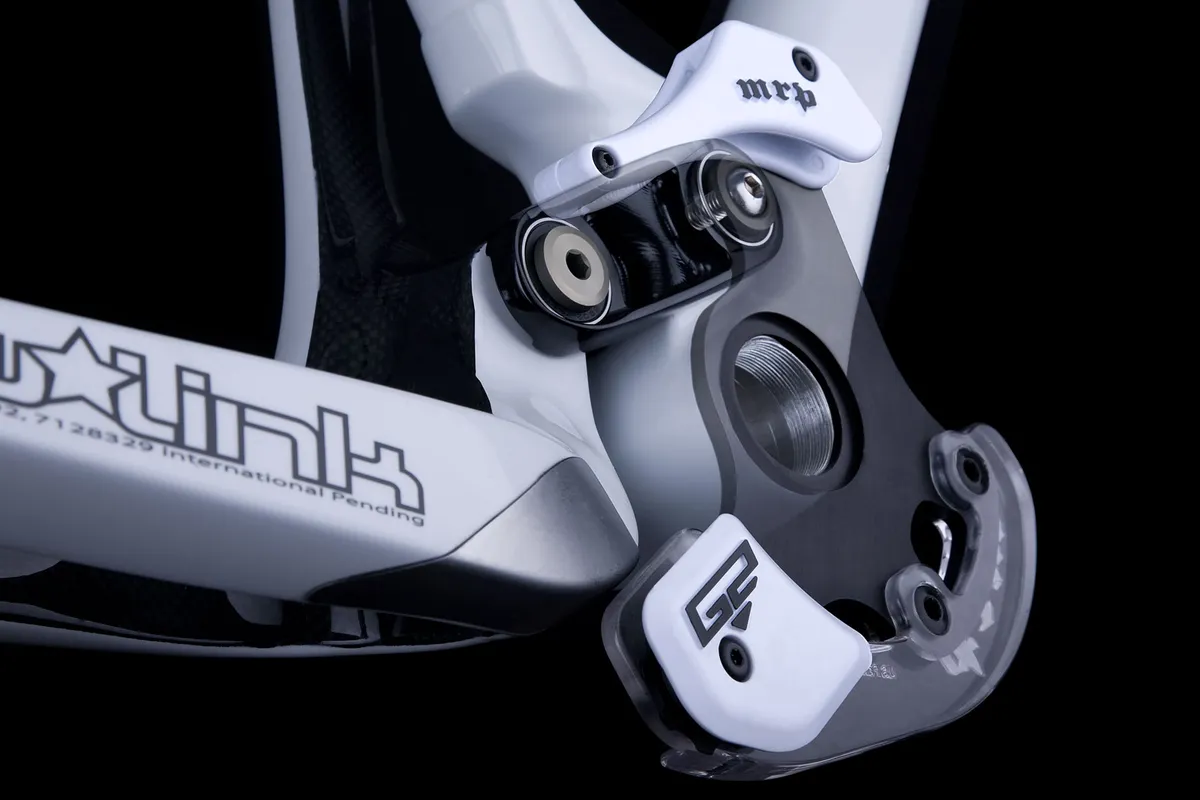
Some will invariably ask why Ibis have taken so long to come out with another model when other companies seem set on cruise control with new frames coming out every year – after all, the HD is only the company's fourth mountain bike frame since the company was relaunched in 2005 and two of the existing models are very closely related.
But Nicol preaches the virtues of operating outside the usual constraints of single model-year development. "We couldn't just come out with another big-hit bike," he said. "We wanted to push the boundaries of what a 160mm bike was all about.
"Getting the frame to 2.86kg (6.3lb in size large) was perhaps the hardest thing, considering our high strength and stiffness targets. With the dw-link, the bike pedals great. And the 1.5in tapered head tube, new layup, robust links and new moulds got us where we wanted to be.
"When you look at the whole package – light weight, reasonable price, great performance, not to mention the gorgeous design – no one has caught up. None of this happened by accident, it was calculated and methodical. What this does is keeps the 'new product bar' unusually high for us, necessitating real (and time consuming) innovation."
Suggested retail price for an Ibis Mojo HD frame with a Fox RP23 rear shock is US$2,399 (UK prices TBC – direct currency conversion is £1,505), with the DHX Air option adding another $133.99 (approx £84). Complete builds will be available, with either SRAM X9 or Shimano Deore XT.
Ibis say the first production frames will begin arriving in stores in March, with colour options to include white, matt black/clear carbon and a third scheme to be determined. Suspension links will be offered in optional red, blue or black anodised finishes.
